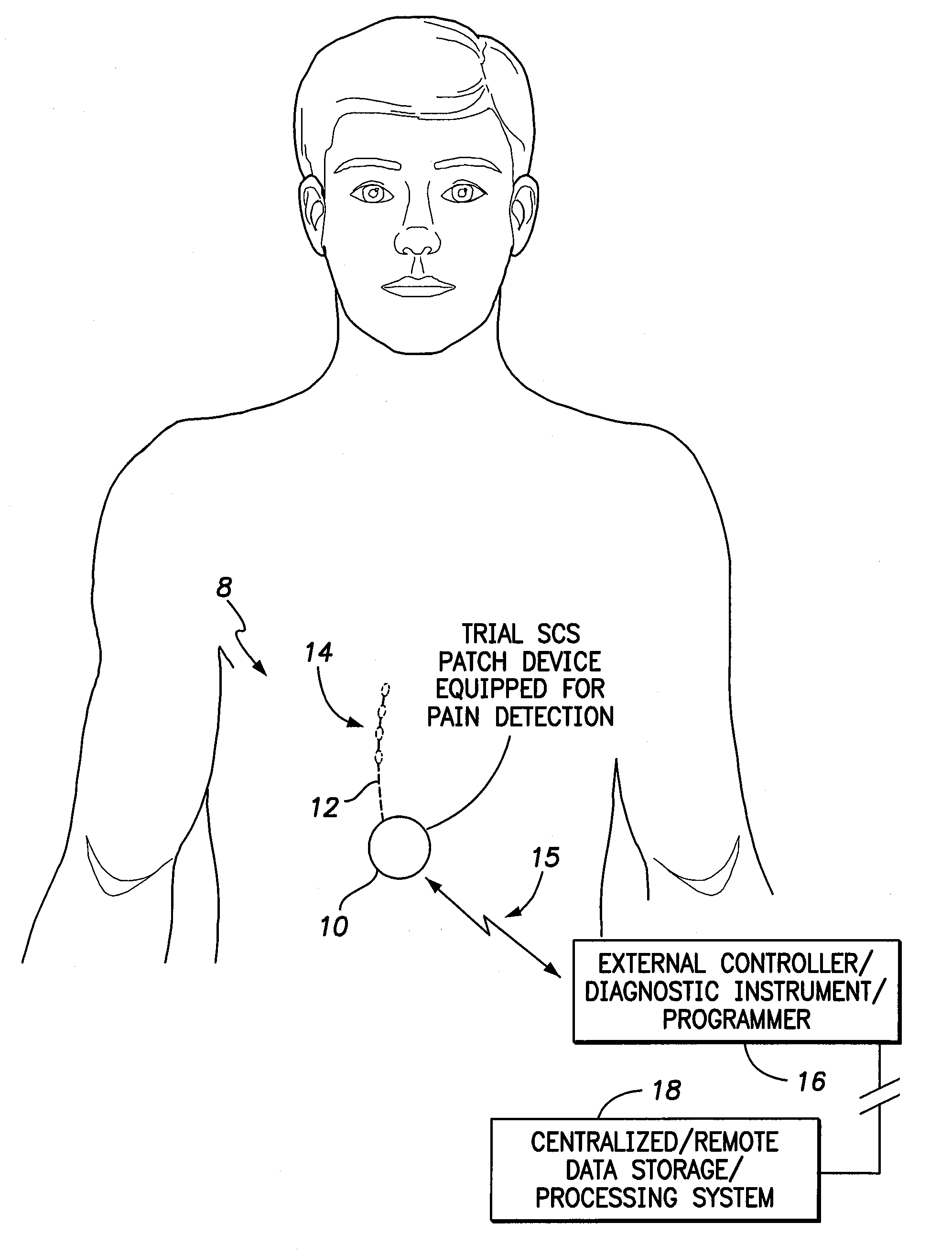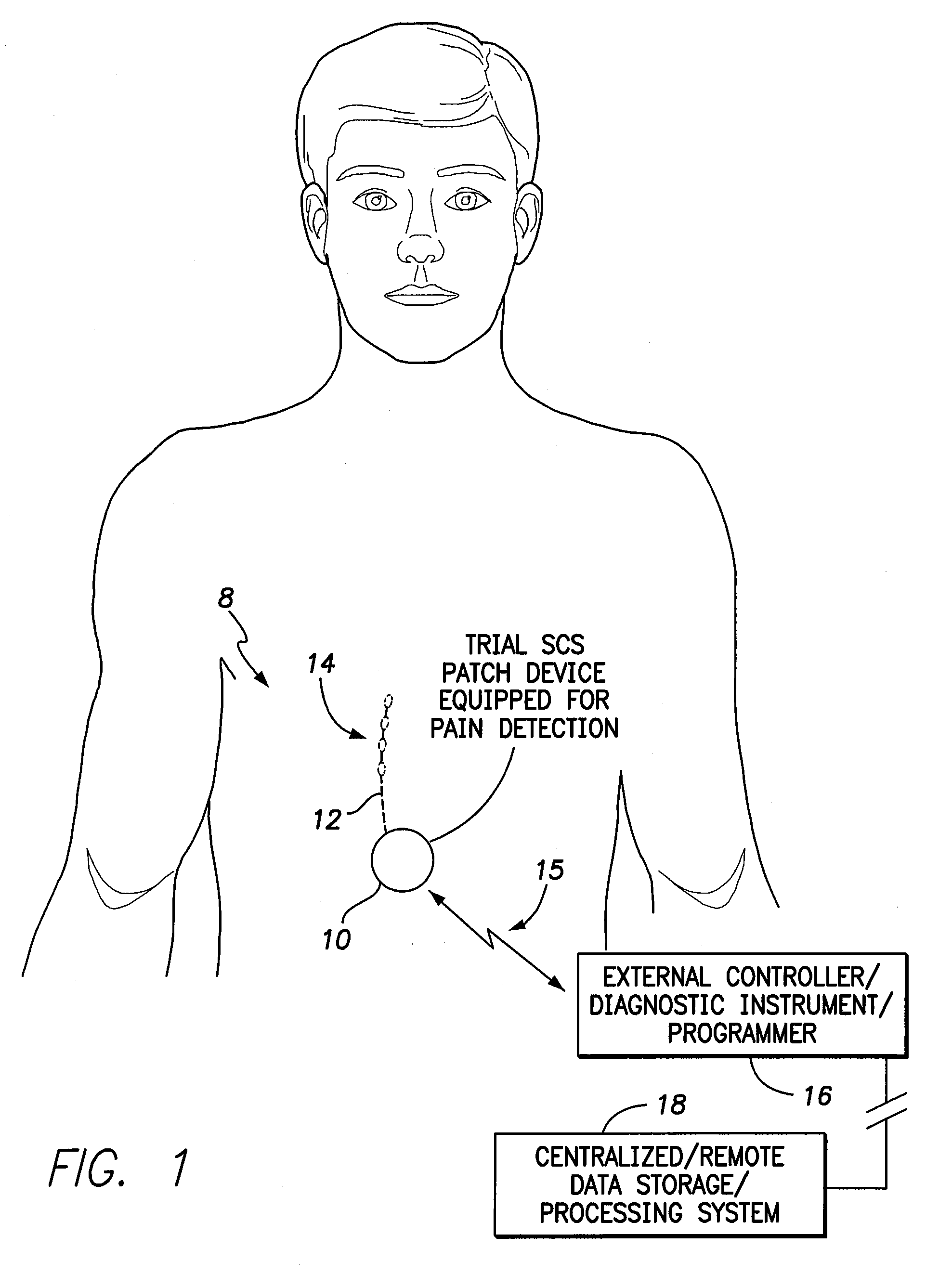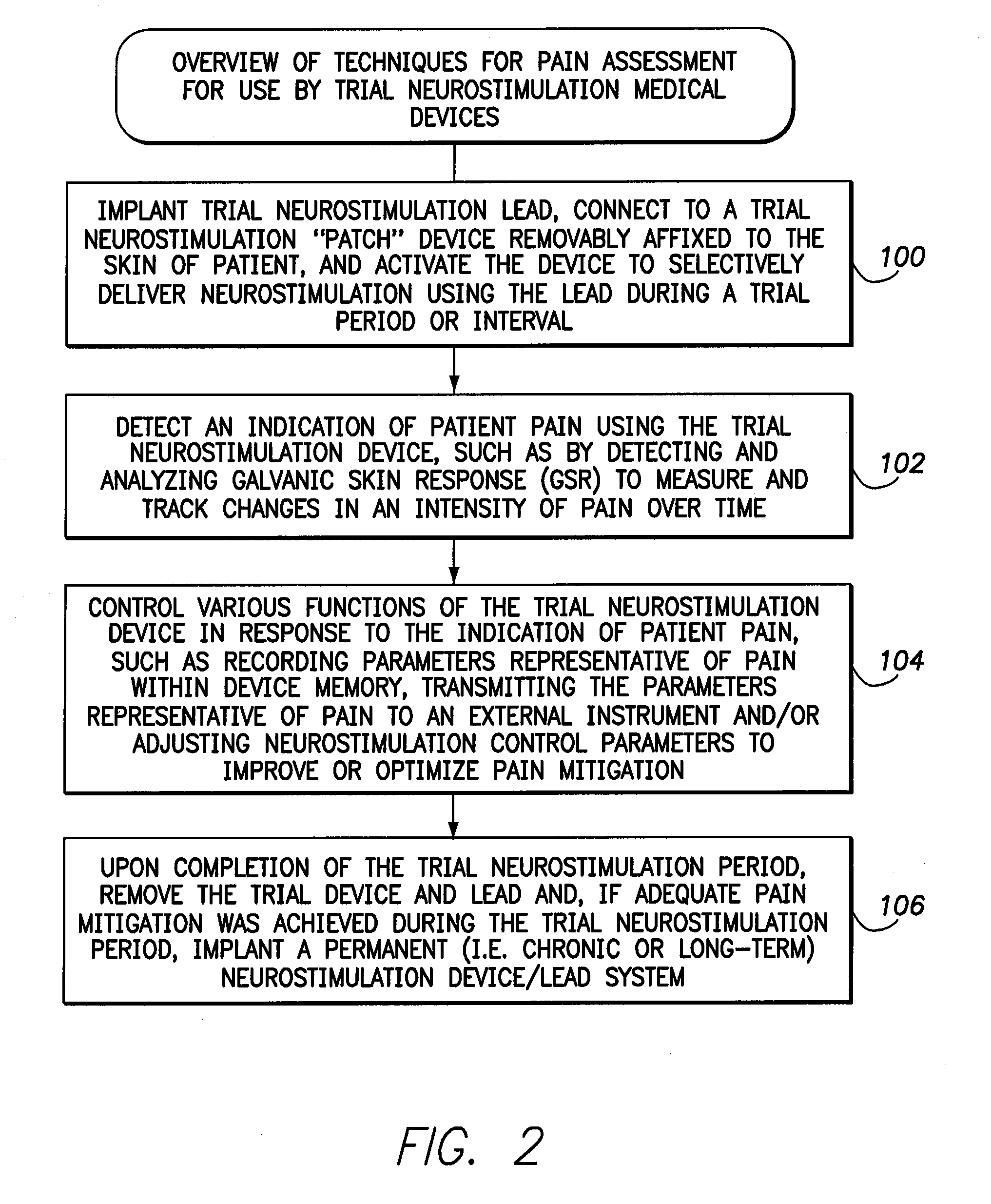Systems and methods for assessment of pain and other parameters during trial neurostimulation
a neurostimulation and pain technology, applied in the field of implantable neurostimulation devices, can solve the problems of increasing the number of spikes in the signal, affecting the overall trial experience of patients, and the neurostimulation components such as the pulse generator may not even be deployed during this interval, so as to improve the overall trial experience for patients, reduce patient discomfort, and improve the effect of overall trial experien
- Summary
- Abstract
- Description
- Claims
- Application Information
AI Technical Summary
Benefits of technology
Problems solved by technology
Method used
Image
Examples
Embodiment Construction
[0023]The following description includes the best mode presently contemplated for practicing the invention. This description is not to be taken in a limiting sense but is made merely to describe general principles of the invention. The scope of the invention should be ascertained with reference to the issued claims. In the description of the invention that follows, like numerals or reference designators are used to refer to like parts or elements throughout.
Overview of Trial Neurostimulation System with Pain Assessment
[0024]FIG. 1 illustrates an exemplary trial medical system 8 having an external trial SCS neurostimulation patch device 10 equipped to deliver neurostimulation to a patient on which the device is affixed and also equipped to assess, track or evaluate patient pain using one or more sensors (not specifically shown in FIG. 1.) Trial SCS device 10 employs, in this example, a percutaneous lead 12 with a set of electrodes 14 implanted within the patient for delivering the tr...
PUM
 Login to View More
Login to View More Abstract
Description
Claims
Application Information
 Login to View More
Login to View More - R&D
- Intellectual Property
- Life Sciences
- Materials
- Tech Scout
- Unparalleled Data Quality
- Higher Quality Content
- 60% Fewer Hallucinations
Browse by: Latest US Patents, China's latest patents, Technical Efficacy Thesaurus, Application Domain, Technology Topic, Popular Technical Reports.
© 2025 PatSnap. All rights reserved.Legal|Privacy policy|Modern Slavery Act Transparency Statement|Sitemap|About US| Contact US: help@patsnap.com



